Starting with solid foods and getting a baby used to new tastes and textures is a big deal for every parent. We all want what’s best for our children and providing them with the right nutrients carries a tremendous responsibility. We’ve been on solids for some good six – seven months now, and it’s not been the easiest ride, let me tell you. Our baby and veggies are not the best of friends. I’ll put it that way.
When I hear my seven-month-old nephew eats anything and everything, keeping his mouth wide open every time a spoon is in his sight, I can’t help it but feel a bit jealous. Our baby was never like that. Ever since we introduced solid foods, things were always a bit complicated, to say the very least. It’s been an up and down experience, one day she would eat something, the next day she wouldn’t touch it.
I’ve certainly done my research about solid foods for babies. But here’s the problem. There are so many different opinions and advice about this subject that I was left with more confusion than clarity.
I decided to follow the advice of introducing vegetables first, so the baby gets used to their taste first before any sweet flavoured foods are offered.
How did it go and what I’ve learned along the way? Well, at twelve months, the little one still refuses to eat some of the food, however, there are slow and steady improvements in her eating habits. But let’s get back to the beginnings.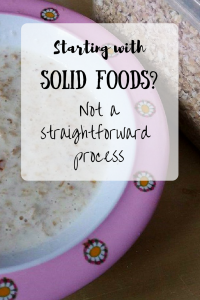
Reality doesn’t always meet your expectations
I had high hopes before our baby started to taste any real food. At five and a half months I thought it was time to give it a go.
- Expectation – My baby is ready for the big move. After all, I’ve Googled and researched extensively. The signs to look out for indicating a child is ready were only confirming my feeling. Steady head control: Tick. Sitting well when supported to be able to swallow food: Tick. Able to hold objects in her hand: Tick. Expressing an interest in your food: Massive tick. She would stare at me every time I was eating, and I felt as if she was robbed of something.
- Reality – Turned out, she wasn’t too ready at the beginning. During the first month of our new endeavour, there were days when my baby would eat a little bit, but for most days of this experimentation stage she would just spit, keep her mouth shut or in better scenario reluctantly open her mouth and make funny faces whenever I managed to get a tiny amount of food in. Her favourites were cucumber and maybe a bit of banana, but that’s probably as far as she would go. She was certainly getting more brave and adventurous with the food, once we hit the seven-month mark.
- Expectation – I’ll go with the advice of offering vegetables first. This makes sense. I’ll just keep trying and persist until my baby begs me to give her more of that yummy courgette puree. My little one will be a huge veggie lover. Only then I’ll offer her fruits and other food as well.
- Reality – Yeah right. I tried. The first time she tasted pureed carrots, she managed to eat a little. My excitement about her love for veggies lasted exactly 24 hours. The next day, after the first taste of the same puree, she would spit it out and cringe and gag but she would not eat it. Maybe it’s the consistency. My friend found runny consistencies to go down better with her baby than if it’s too thick. I changed the consistency, but the result was the same. After not much success with pureed vegetables, I decided to try vegetable as finger food, namely carrot and a broccoli floret. No, she wouldn’t have that either. It was so disheartening seeing her refuse carrots, broccoli, courgette, cauliflower. One by one, all the veggies would go straight into the bin.
We started slowly introducing fruits and yoghurts. She loves them. No problems with these.
- Expectation – Food is for fun during the first year. I won’t stress out or make a fuss over it.
- Reality – When I raised my concerns to health professionals about my baby not eating veggies, this is what I was told. ‘She is getting enough nutrients from your breast milk until she is twelve months old. Just keep trying. Ufff, relief at last. But then, at almost ten months old, my baby suddenly decided that she doesn’t want my breast milk anymore. And she didn’t want to drink milk from a bottle either. So, what the heck do I do now? How am I not going to make a fuss over it? Fortunately, she would eat porridge, rice milk and other milk-based foods for breakfast and dinner, so at least she was getting some milk this way. Plus, she drinks a little bit of milk from her sippy cup during the day. So, we just had to adapt and find new ways of giving her the milk she needs.
Despite difficulties, all is not lost
At twelve months, my baby can still be picky sometimes, but things are slowly improving day by day. We can even see the bottom of the bowl at times. I’d like to share what worked for us in those first challenging months when my baby was less adventurous with her food.
Please note that I’m not an expert in baby weaning subject or a health professional, just a first-time mum sharing her own experience.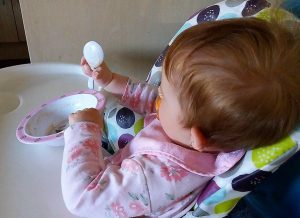
- Patience is your best asset – I mean, seriously. You’ll need a looot of patience during this transition period to solid food. The little one would have two spoons of her food before deciding she’s had enough. She’ll take two more spoons five – ten minutes later, and it can go like this for good hour sometimes. Feeding a baby is a lengthy process.
- It’s ok to let them ‘starve’ a bit – This also ties into the point above. We used to offer alternative food to our baby when she refused her main meal. For example, if she didn’t eat her soup we would freak out, thinking she must be starving, and give her yoghurts, snacks, fruit purees, anything really that she would eat. It was certainly getting into the stage where she would hardly eat anything apart from her snacks. This had to stop. So instead of giving her snacks, we waited a bit, let her get more hungry and then offer her the meal again. Most of the time, she would eat it later, at least some of it, which was better than nothing.
- Eat together as much as you can – Everyone is encouraging family mealtimes, and I can totally understand why. My baby certainly eats better when we eat together. She can refuse a certain food at first, for example, chicken, but as soon as she sees me indulging in it, she is suddenly more interested and wants to try what I’m eating too. We used to feed the baby first, then ourselves, but now we are trying to get into the habit of eating together as a family, and it works wonders with our little one.
- Try and keep trying – Each baby start eating solid foods at a different pace. Some will love it straight away (my nephew), some won’t be ready until a lot later (my baby), but each child will eat eventually. If your baby doesn’t like something try it again at another time. If the purees aren’t going down well, try to offer finger foods and vice versa. My baby still won’t eat vegetables in the form of finger foods, but if it’s mashed and served with other food like rice or pasta or in soup, there is much higher chance that she will give it a go.
I’d love to know about your baby’s transition to solid foods. Do you have some other tips you would want to share?
Zuzana
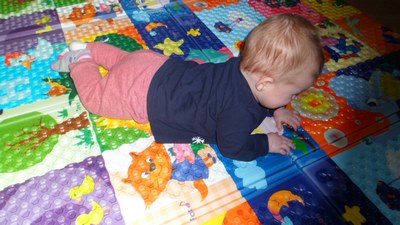

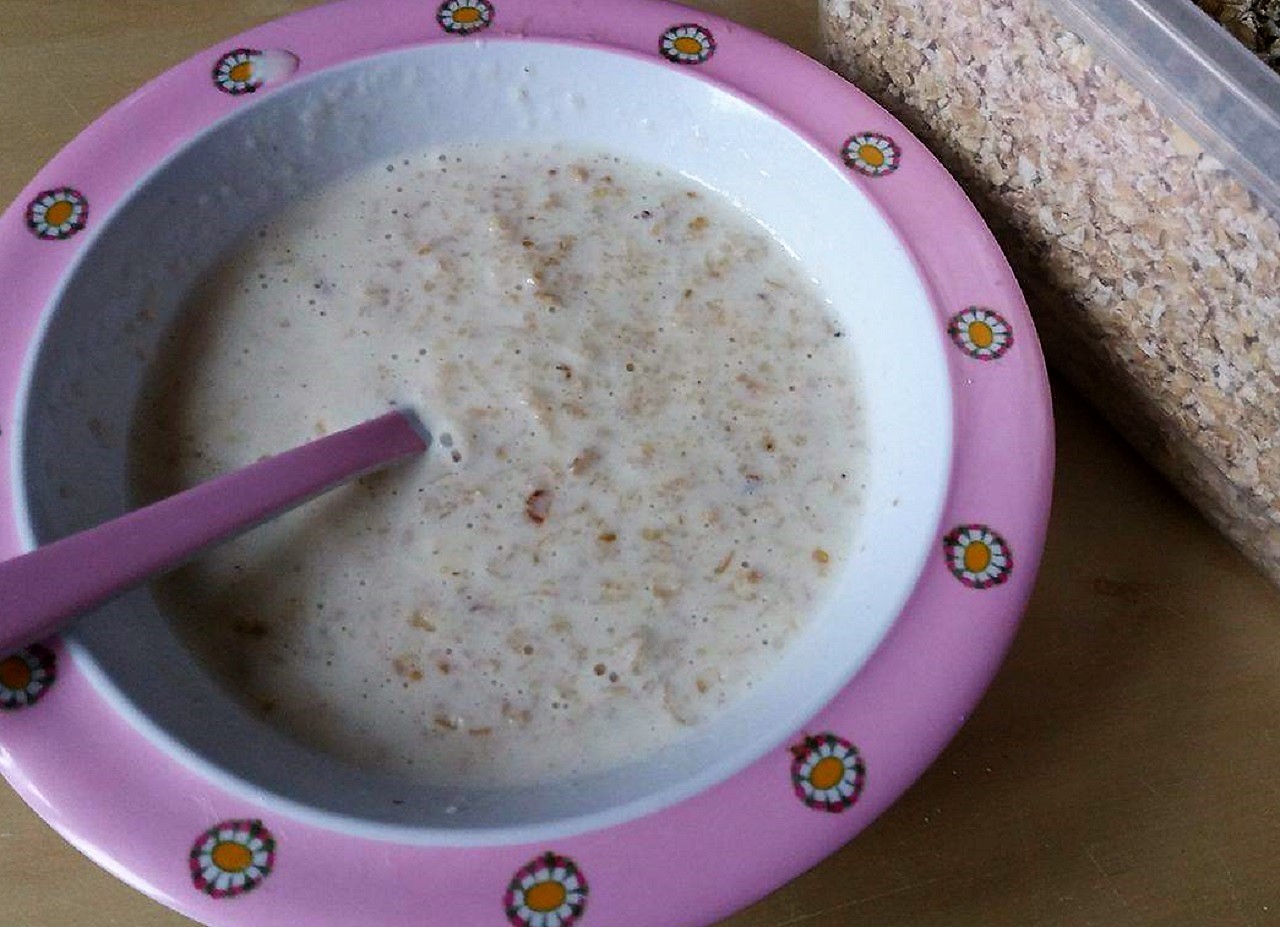


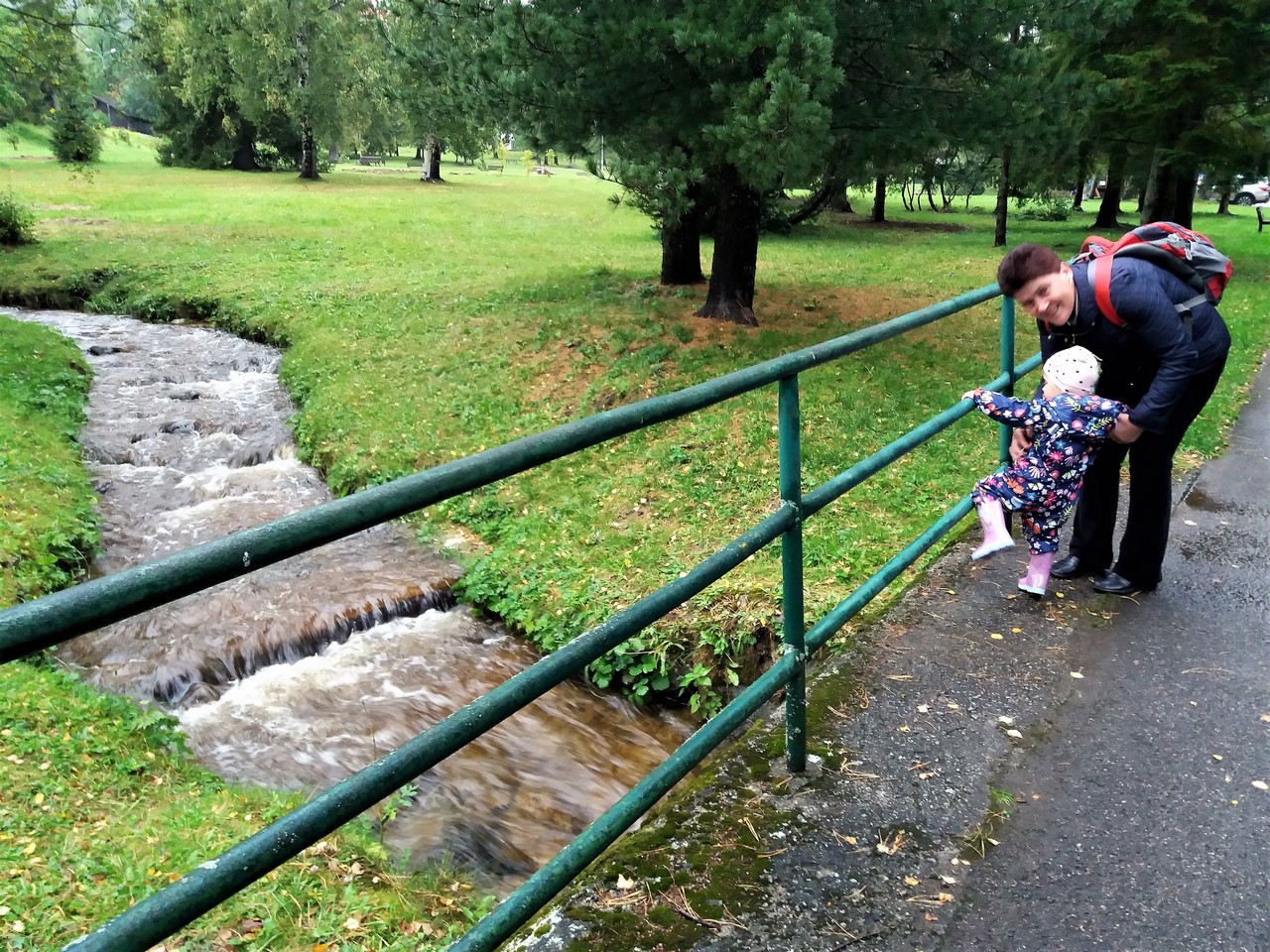
2 Comments
You are so right when you say starting with solid foods isn’t a straightforward process. Both my daughters decided when it was time to begin their solid food intake. I tried several different times with each daughter and they both had their own time table. I will say though, both nursed until they were just about 9 months old. My eldest had her first go at solids when she was just under a year old. So, all in all, it’s all a matter of how one is raised and what it is their body is needing for nourishment.
It’s just so individual, isn’t it? I was so freaking out when my baby wouldn’t eat, can’t imagine waiting till she’s one year old like one of your daughters. Now I know that babies will eventually eat when they are ready, some sooner others much later. Seems like there is something about that nine-month mark for breastfeeding coming to an end. I know few other mums with the same experience 🙂